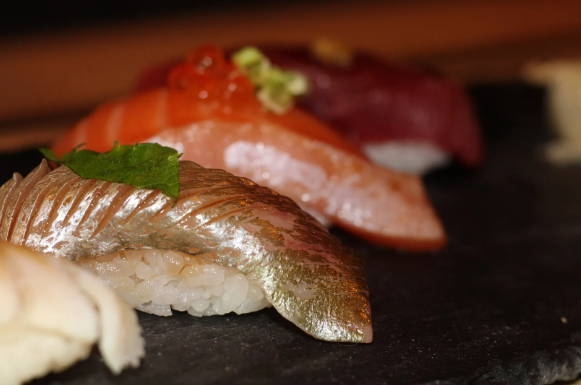Are you ready to unlock the secrets of deep tissue massage and elevate your therapeutic skills to new heights? Whether you’re a seasoned therapist looking to refine your techniques or an enthusiastic novice eager to explore the powerful benefits of this hands-on art, you’ve come to the right place! In our comprehensive guide, “Deep Tissue Massage Techniques: A Guide for Therapists and Enthusiasts Alike,” we’ll dive into the nuances of pressure, precision, and intention that define this transformative practice. Discover how targeted strokes can relieve chronic pain, release tension stored in tight muscles, and promote overall well-being. Join us on this journey as we unravel time-tested methods and innovative approaches—designed not just for those behind the massage table but for anyone passionate about healing through touch. Get ready to deepen your understanding and enhance your experience with every stroke!
Introduction to Deep Tissue Massage
Deep tissue massage is more than just a luxury; it’s a powerful therapeutic technique that can transform your well-being. Whether you’re an experienced therapist or someone curious about the world of bodywork, understanding deep tissue massage techniques can enhance your wellness journey. With its focus on realigning deeper layers of muscles and connective tissues, this type of massage tackles tension and chronic pain like no other.
Imagine easing those stubborn knots in your back after a long week at work or releasing built-up stress from everyday life. The benefits extend beyond relaxation—they can improve flexibility, circulation, and overall health. As we dive into the various techniques used in deep tissue massage, you’ll discover how to harness these methods effectively for yourself or others. Get ready to explore the art of healing through touch!
Understanding the Benefits of Deep Tissue Massage
Deep tissue massage offers a range of physical and emotional benefits. It targets the deeper layers of muscles, providing relief from chronic tension and pain. This specialized technique can be especially effective for athletes or those with physically demanding jobs.
By breaking down adhesions in muscle fibers, it enhances circulation. Improved blood flow accelerates healing and promotes overall wellness. Clients often report feeling more relaxed after a session, as deep tissue massage also reduces stress levels.
The therapy helps to realign collagen fibers in the body’s connective tissues. This alignment contributes to better posture and flexibility over time. Additionally, many individuals find that their mental clarity improves following treatment, making it an excellent choice for those needing both physical and psychological rejuvenation.
Incorporating deep tissue techniques into regular self-care routines can lead to long-lasting improvements in health and well-being.
Techniques for Deep Tissue Massage
Deep tissue massage is an art that requires mastery of various techniques. Each method targets specific muscle layers and aims to release tension effectively.
Palpation and assessment lay the groundwork. Therapists evaluate muscle tightness, identifying areas needing focus. This foundational step ensures a tailored approach for each client.
Myofascial release involves gentle stretching of connective tissues. It alleviates restrictions, enhancing overall mobility while promoting relaxation.
Trigger point therapy zeroes in on knotted muscles. By applying pressure to these points, therapists help reduce pain and restore function, providing immediate relief.
Friction technique utilizes deep movements against the grain of the muscle fibers. This method helps break up adhesions and improves circulation in targeted areas.
Stripping focuses on long strokes along muscle lengths, encouraging blood flow while addressing chronic tension. Strain/counterstrain techniques involve positioning clients for optimal comfort during treatment adjustments, facilitating deeper healing without discomfort.
Palpation and Assessment
Palpation and assessment are the foundations of effective deep tissue massage. This initial phase allows therapists to gather critical information about a client’s body.
By using their hands, therapists can feel muscle tension, identify knots, and assess overall body alignment. Each touch reveals valuable insights into areas needing attention.
It’s essential to approach this process with sensitivity. Clients often have unique responses to pressure. Listening to their feedback is crucial for tailoring the session appropriately.
Creating an open dialogue enhances trust between therapist and client. Discussing any discomfort during palpation helps adjust techniques on the fly.
Through careful observation and skilled palpation, practitioners develop individualized treatment plans that address specific needs, paving the way for deeper healing throughout the massage experience.
Myofascial Release
Myofascial release is a hands-on technique that targets the fascia, the connective tissue surrounding muscles. It focuses on releasing tension and restrictions within this network.
Therapists apply sustained pressure to specific points in the body. This helps restore flexibility and reduces pain. The slow, gentle approach allows for deep relaxation and can lead to significant improvements in movement. Clients often experience enhanced blood flow as knots are released. With increased circulation comes better oxygen delivery to tissues, aiding recovery.
The beauty of myofascial release lies in its adaptability. Whether you’re dealing with chronic pain or recovering from an injury, it can be tailored to fit individual needs perfectly. This technique also encourages mindfulness during sessions, creating a deeper connection between mind and body. Engaging fully allows clients to notice subtle changes as they unfold throughout treatment.
Trigger Point Therapy
Trigger point therapy focuses on specific areas known as trigger points. These are tight knots that form in muscles, often leading to pain and discomfort. By targeting these spots, therapists can help release tension and alleviate referred pain elsewhere in the body.
During a session, pressure is applied directly to the trigger points. This technique encourages blood flow and promotes healing. Clients often experience immediate relief after treatment.
Communication between therapist and client is crucial here. Identifying where discomfort exists allows for more effective targeting of those troublesome areas.
Incorporating breathing techniques enhances the experience as well. Deep breaths can help clients relax, making it easier for therapists to work through those tight muscle fibers.
Regular sessions can prevent future issues by maintaining muscle health and flexibility. It’s about creating a balance that fosters overall wellness while addressing specific concerns effectively.
Friction Technique
Friction technique is a powerful method within deep tissue massage. It focuses on applying pressure and movement across the muscle fibers. This technique helps break down adhesions and scar tissue that can limit mobility.
Therapists use their fingers, thumbs, or elbows to create friction over specific areas. The motion usually involves circular or transverse patterns. This targeted approach effectively releases tension in tight muscles. One of the key benefits is increased blood flow to the treated area. Enhanced circulation promotes healing by delivering essential nutrients while flushing out toxins.
Clients often report immediate relief after receiving friction therapy. However, it’s crucial to communicate during the session to ensure comfort levels are maintained. Adjusting pressure based on feedback enhances effectiveness and overall experience.
Integrating this technique requires practice and sensitivity from therapists, making it an invaluable skill in deep tissue massage sessions.
Stripping and Strain/Counterstrain Techniques
Stripping involves applying deep pressure along the muscle fibers. This technique helps release tension and break down adhesions. Therapists use their fingers, palms, or forearms to glide smoothly over the muscle surface. The goal is to promote relaxation and improve blood flow.
Strain/counterstrain techniques focus on finding tender points in the body. By gently positioning the client away from these areas of discomfort, tension is alleviated without forceful manipulation. It’s all about listening to what the body needs. Combining both methods can yield impressive results. Stripping prepares muscles for deeper work while counterstrain allows them to rest and recover effectively. Together, they create a balanced approach that enhances mobility and reduces pain.
These techniques require sensitivity and awareness from practitioners. Knowing when to apply pressure or ease off makes all the difference in achieving optimal outcomes for clients seeking relief from chronic issues.
Tips for Properly Performing Deep Tissue Massage
Creating the right environment is essential. Ensure the room is quiet, warm, and free from distractions. Soft lighting can help set a calming mood.
Communication with your client is key. Ask about their comfort levels and any areas of tension before starting. This builds trust and allows for a more effective session.
Use proper body mechanics to protect yourself as the therapist. Maintain good posture while applying pressure; this helps prevent injury on your part and provides clients with consistent treatment.
Start slow to gauge muscle response. Gradually increase intensity based on feedback, ensuring that you’re not causing discomfort or pain.
Always incorporate breathing techniques into your practice. Encourage deep breaths during strokes to promote relaxation in both you and your client.
Lastly, remember to hydrate after each session—both for yourself and your client—to support recovery from the physical work done during massage therapy.
Common Mistakes to Avoid
One common mistake in deep tissue massage is applying too much pressure too quickly. This can lead to discomfort or even injury for the client. Always communicate and adjust your techniques based on their feedback.
Another pitfall is neglecting proper body mechanics. Therapists often strain themselves by using poor posture, which can result in fatigue or injury over time. Remember to engage your core and use your weight effectively. Failing to warm up muscles before diving into deeper work can also be detrimental. Take the time for light strokes and gentle movements first; this prepares the tissues for more intense manipulation.
Lastly, don’t overlook aftercare advice. Clients need guidance on hydration, stretching, or rest following a session. Providing these tips enhances their overall experience and effectiveness of the treatment.
Precautions and Contraindications for Deep Tissue Massage
Deep Tissue Massage can be incredibly beneficial, but it’s essential to recognize when it may not be suitable. Certain health conditions require caution.
Individuals with blood clotting disorders should avoid deep tissue techniques. The pressure applied during a session could dislodge a clot, leading to serious complications.
Clients with recent injuries or surgeries need special attention. Deep manipulation might exacerbate pain or delay healing processes. It’s crucial to consult healthcare providers before proceeding.
Skin infections and rashes also warrant avoidance of massage in affected areas. This precaution helps prevent the spread of infection and ensures client safety.
Pregnant individuals should seek specialized prenatal massage therapy instead of traditional deep tissue methods due to bodily changes that affect comfort and safety.
Always communicate openly about medical histories prior to any treatment for tailored care that prioritizes well-being.







Leave a comment
Your email address will not be published. Required fields are marked *